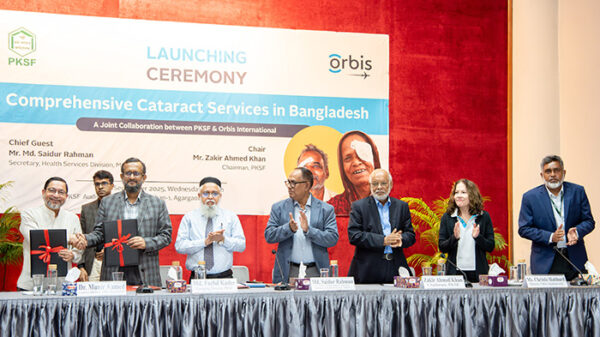October 11, 2025, 2:30 pm
Saint Martin’s Island: The coral jewel of Bangladesh

TAM Report ||
Saint Martin’s Island, the only coral island in Bangladesh, stands as a rare and fragile gem in the Bay of Bengal. Located about 9 kilometers south of the Cox’s Bazar-Teknaf peninsula and only a few kilometers from Myanmar’s coast, the island spans roughly 8 square kilometers and offers a unique blend of natural beauty, biodiversity, and coastal culture.
Known locally as “Narikel Jinjira,” or “Coconut Island,” due to its abundance of coconut palms, Saint Martin’s has gained popularity as a tranquil tourist destination. The island’s charm lies in its crystal-clear waters, pristine white beaches, and vibrant coral life — features that are increasingly hard to find in the heavily developed coasts of South Asia.
A Natural Haven
The island’s ecology is its most defining feature. Coral reefs, home to a diverse range of marine species, line its shores. Shallow lagoons host starfish, sea cucumbers, and colorful reef fish, while the deeper waters invite occasional visits from dolphins and sea turtles. The eastern coast is calmer and ideal for snorkeling, while the west, with its slightly rougher surf, is a favorite for beachcombers and sunset watchers.
The island is also a critical nesting ground for endangered sea turtles, particularly the Olive Ridley species. Conservation groups have worked in collaboration with local authorities to create awareness and establish temporary protected zones during breeding seasons.
Life on the Island
Saint Martin’s has a small, close-knit population of around 7,000 people, most of whom rely on fishing and tourism for their livelihoods. Dried fish (shutki) production is a key economic activity, along with coconut harvesting and small-scale hospitality businesses.
Life here is simple and slow-paced. There are no motor vehicles; residents and tourists get around by walking or using cycle rickshaws. Electricity is limited and often solar-powered, with many hotels relying on generators after dark. This lack of urban infrastructure, while inconvenient at times, adds to the island’s peaceful, untouched atmosphere.
A Tourism Boom — and Its Consequences
In recent years, tourism has become both a blessing and a burden for Saint Martin’s Island. Between November and March — the peak season — thousands of domestic tourists arrive daily via sea-truck ferries from Teknaf and Cox’s Bazar. While this influx boosts the local economy, it also brings with it mounting environmental pressure.
Coral damage from boat anchors, litter on the beaches, and overfishing have led environmentalists to raise concerns about the island’s sustainability. Bangladesh’s Department of Environment has designated Saint Martin’s as an Ecologically Critical Area (ECA), aiming to regulate development and promote eco-friendly tourism practices.
Preserving Paradise
Efforts are ongoing to balance conservation with community welfare. NGOs and universities have initiated coral restoration projects, and stricter regulations on tourist activities are being discussed. There is also a growing push for responsible tourism — educating visitors to leave minimal impact and respect the island’s fragile ecosystem.
Saint Martin’s Island remains one of South Asia’s most captivating coastal treasures. But its future depends on careful stewardship. As tourism continues to grow, preserving this rare coral island must become a shared responsibility — one that ensures this paradise remains untouched for generations to come.























